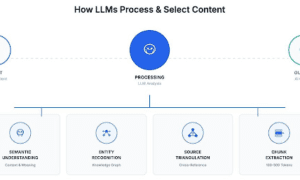In the vast universe of Warframe, where battles unfold across exotic landscapes and futuristic realms, an intricate in-game economy thrives. At the heart of this dynamic ecosystem is the art of trading, a crucial aspect that adds depth and excitement to the Warframe experience.
Warframe’s in-game economy is a vibrant tapestry woven by the player community. It extends beyond the mere exchange of items; it’s a living, breathing entity shaped by the interactions of players who seek to enhance their arsenals and fashion unique Warframes. The economy becomes a social hub, where the value of items transcends their stats, and rarity is a currency of its own.
Trading in games like Warframe isn’t just a transaction; it’s a narrative. It allows players to craft their stories by acquiring coveted weapons, mods, and Warframes, similar to how players buy Fortnite items to enhance their gameplay experience.
The significance of trading within Warframe lies not only in the items exchanged but also in the camaraderie it fosters, the stories it creates, and the sense of accomplishment as players forge alliances through mutual exchanges. This mirrors the excitement and strategy involved in acquiring items in Fortnite, enriching the overall gaming experience.
Evolution of Warframe’s Trading System
Over the years, Warframe’s trading system has undergone a fascinating evolution, mirroring the dynamic nature of the gaming landscape. In its infancy, trading among players was more akin to bartering in a virtual marketplace. Tenno would convene in makeshift hubs, haggling over prime parts and blueprints with a sense of camaraderie.
As the game matured, so did its trading dynamics. The introduction of the Clan Dojo Trading Post marked a pivotal moment, providing a dedicated space for players to exchange goods. This transformed the trading experience, fostering a sense of community within Warframe. The once scattered and informal transactions became more structured, allowing players to engage in more organized and efficient trading.
With each update, Warframe developers fine-tuned the trading system, addressing player feedback and introducing features that enhanced the overall experience. The inclusion of the Maroo’s Bazaar hub, where players could flaunt their wares in a bustling marketplace, added a layer of immersion to the trading process. This evolution not only streamlined transactions but also added an element of excitement as Tenno navigated the vibrant hub in search of coveted items.
In essence, the evolution of Warframe’s trading system is not just a chronological progression; it’s a narrative of how a community-driven economy adapted and thrived, weaving a tale of collaboration and shared passion among players.
Features and Strategies in Warframe Trading

In the bustling virtual markets of Warframe, the trading system stands as a dynamic hub for player interactions. The system boasts several key features that contribute to its vibrant economy. Firstly, the easy-to-navigate user interface ensures that even novice players can engage seamlessly in buying and selling. The inclusion of diverse tradeable items, from rare mods to coveted prime parts, adds depth to the trading experience, accommodating a wide range of player interests.
Successful in-game trading is an art mastered by seasoned players, often guided by effective strategies. Patience becomes a virtue as players monitor market fluctuations to identify optimal times for transactions. Building a reputable online presence and establishing trust within the Warframe community is paramount, fostering long-term trade relationships. Additionally, staying informed about the current value of items and being adaptable to market trends enables players to make informed decisions, maximizing the value of their trades.
In the intricate tapestry of Warframe’s trading ecosystem, these features and strategies weave together, creating a vibrant and ever-evolving space where players not only exchange goods but also forge connections within the gaming community.
Gameflip: A Game-Changer in Warframe Trading
Gameflip’s popularity among Warframe players can be attributed to its user-friendly interface and seamless integration with the gaming community. The platform serves as a virtual marketplace where players can buy and sell in-game items, creating a dynamic ecosystem that fosters both competitiveness and camaraderie.
What sets Gameflip apart are its unique features tailored to the Warframe community. The robust rating system ensures that players engage in secure and trustworthy transactions. The transparent pricing model and real-time market data empower traders with the knowledge needed to make informed decisions, fostering a sense of control and fair play.

Moreover, Gameflip’s commitment to community-building is evident in its forums and chat features, where players can discuss strategies, share insights, and build lasting connections. It’s not just a trading platform; it’s a social hub where the Warframe community comes together, creating a shared space for enthusiasts to thrive.
In the vast galaxy of Warframe trading, Gameflip has emerged as the North Star, guiding players through a seamless, secure, and socially enriched trading experience that enhances the overall thrill of the game.
Future Trends and Considerations in Warframe’s Economy
As the Warframe universe continues to evolve, players eagerly anticipate future trends in the in-game economy. One emerging trend centers around the introduction of dynamic marketplaces, where player-driven economies become even more intricate. This evolution could lead to a more diverse array of trade options, empowering players to engage in unique and specialized exchanges.
Considering these shifts, players should stay attuned to potential changes in the game’s mechanics and policies. Developers might introduce new features, altering the dynamics of trading and influencing the value of in-game items. As Warframe’s economy adapts to the changing landscape, players may need to refine their strategies to navigate these adjustments successfully.
Moreover, the introduction of new content, such as expansions or updates, often triggers fluctuations in item values. Players should be mindful of these developments, as they can significantly impact the supply and demand within the Warframe marketplace. Staying informed and adaptable will be key as the game’s economy continues to transform, ensuring that players can make the most of future trading opportunities.
Conclusion
In the vast realm of Warframe’s digital universe, the game’s economy stands as a testament to the intricate dance of strategy and camaraderie. As players navigate the intricate trade paths within the Warframe game, the evolution of its trading system becomes a captivating journey through time. From humble beginnings to a sophisticated network of exchange, Warframe’s in-game economy has flourished, driven by the collective ingenuity of its player base.
Enter Gameflip, a game-changer that has seamlessly integrated itself into the fabric of Warframe’s trading scene. With its user-friendly interface and innovative features, Gameflip has emerged as a catalyst, elevating the trading experience to new heights. The platform’s influence extends beyond the digital, fostering a sense of connection among players who share a passion for the art of the deal.






























